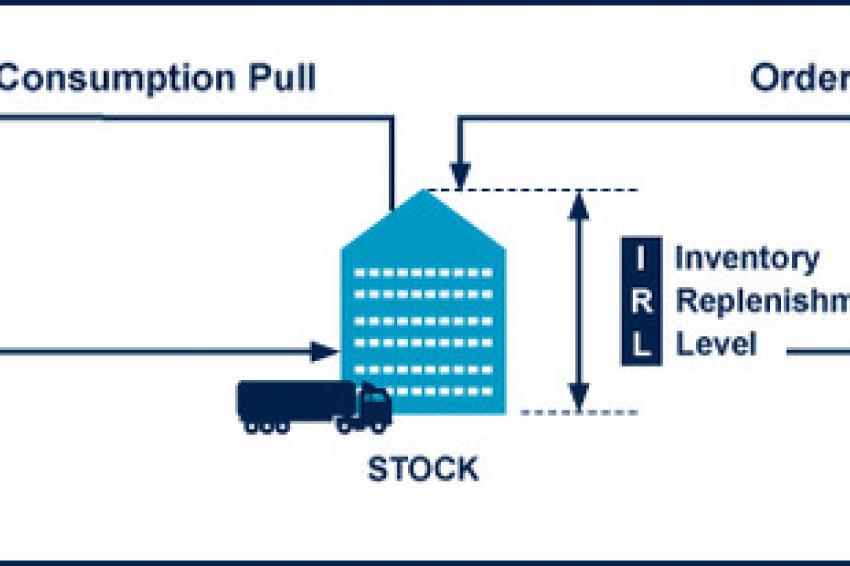Rhythm Wheel Concept - an element of Lean SCM concepts
23.04.2014 -
The Rhythm Wheel is a lean planning and scheduling instrument, which changed production planning and scheduling on modern multi-purpose production assets. Its benefits compared to traditional scheduling approaches cannot be ignored in order to seize competitive advantages and sustainably reduce COGS, inventory holding costs and capacity costs. The Rhythm Wheel is an element of Lean SCM concepts and is used, for instance, together with a target Inventory Replenishment Level (IRL) as depicted in the picture. Furthermore, the Rhythm Wheel can be combined with make-to-order (MTO), vendor-managed-inventory (VMI), or even purely forecast driven replenishment.
The basic principles of the Rhythm Wheel concept
- Inventory levels are replenished by the Rhythm Wheel leveled production asset
- A strict production sequence and a repetitive production cycle eases production, buffers demand volatility and lead to learning effects
- The Rhythm Wheel design depends on few and transparent parameters: Current orders and Inventory Replenishment Levels (production quantity = IRL - current inventory). This reduces complexity and increases transparency along the entire supply chain
- The pull mode avoids over or underproduction due to forecast errors as the production is triggered only by actual demand
- With the Rhythm Wheel concept, both leveled capacity utilization and low inventory levels can be achieved at the same time
Benefits
The Rhythm Wheel provides four key benefits that distinguish it from traditional scheduling approaches:
- Products are always scheduled in the optimal sequence. This leads to lowest possible changeover times and allows setting free capacity, which can then be used for production.
- The repetitive production sequence leads to learning effects in changeovers, which in turn reduce changeover times further and improve the yield of the production asset.
- The fix production interval, namely the Rhythm Wheel cycle length, leads to constant capacity utilization and transparent production schedules. This in turn allows a reduction of inventories and a better planning of supply from the upstream production processes.
- The Rhythm Wheel minimizes scheduling effort by applying the pull principle and leads to less firefighting due to forecast errors, because production always follows simple rules. This brings routine into scheduling and balances capacity utilization.
Learn more about Lean Supply Chain Planning, just visit www.leansupplychainplanning.com
Contact
Camelot Management Consultants AG
Theodor-Heuss-Anlage 12
68165 Mannheim
+49 621 86298 0
+49 621 86298 250





